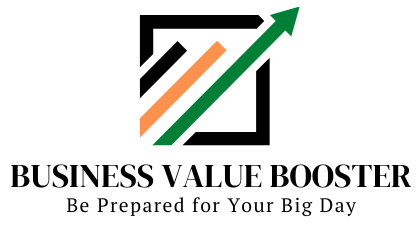The Federal government’s attempts to mitigate the effects of the pandemic of 2020-2021 resulted in enormous impacts on small businesses. Every action seemed to add another round of miseries: lockdowns of employees and customers, requiring expensive modifications to interior spaces only to change the guidance and requiring re-remodeling, paying employees to stay home … the pile-on never seemed to stop. But eventually the government hit on a solution that directly assisted small business owners in keeping their businesses open and their employees on the job: easy access to capital.
As with many things that are done in a hurry, there were many misunderstandings by desperate owners, and many gaps in the administration of the program, leading to many misconceptions, some of which are just now coming home to roost:
- Federal loans do not have to be repaid
- My loan is none of the buyer’s business
- Having a substantial loan proves how creditworthy the business is
These are all FALSE, and they can all cost you a great deal of money.
This post covers the first of them; tune in next week for more:
Misconception #1: Federal loans do not have to be repaid
Those solutions came in the form of loans, but it was widely believed that they would be automatically forgiven instead of having to be repaid. It was generally understood that there were terms for those loans, but the haste and no-questions basis with which the money was given out may have led to the assumption that collection would be equally haphazard.
The two principal programs were Economic Injury Disaster Loans (EIDL) and the Paycheck Protection Program (PPP).
EIDL loans could reach over $500,000 and provided generous terms – a low 3.75% interest rate, further softened by a 30 year period, and in the short term, no payment for two years (although interest accrued anyway). These were collateralized loans: the business’ assets (and the owner’s personal assets) are on the table in case of default. In 2023, those loan payments will start coming due. Yes, the terms were generous, but it is the equivalent of a mortgage payment on a nice house. It may not be reflected on your profit and loss statement, but it will make a significant dent in your cash flow, and cash is what makes your business work – or fail. Now is the time to plan out how to cover that expense.
The PPP loans covered 8 weeks (later extended to 24 weeks) of a business’ payroll expenses. They would be forgiven if the business maintained its staff and pay levels throughout the period, and the loan proceeds were used to pay authorized types of expense. (One interesting provision was that the balance of any EIDL loan could be added into the PPP loan, effectively making the EIDL forgivable if the proceeds were used for PPP-eligible purposes). However, the owner cannot apply for forgiveness until the proceeds from the loan have been expended. No payments were required until the tenth month after the end of the covered period, although interest (at the nominal rate of 1 percent) accrued from the start; the loan periods ranged from two to five years.
As with the EIDL, for almost all businesses, those PPP payments are now due if the loan has not already been forgiven. Yes, it’s a freebie if you play it right, but getting forgiveness is by no means automatic. Some loans are forgiven via the lender and some via the SBA directly; all of them require extensive documentation to prove that the conditions were met. Owners must also be aware of any benefits that may have been taken, wittingly or otherwise, through tax concessions provided by other legislation that came pouring out during this period, notably the CARES Act and the American Rescue Plan. If you haven’t gotten your loan forgiveness in writing and the SBA account balance reduced to zero by now, you need to consult your CPA and possibly an accountant and/or tax attorney. Once the IRS starts thinking about penalties and interest, the taxpayer will quickly be overrun by an implacable bulldozer with unlimited time and resources.
==================
Visit the next post to find out more about misconceptions 2 and 3:
- My loan is none of the buyer’s business
- Having a substantial loan proves how creditworthy the business is
Want to chat about where your business is and how to make it look its best when you decide to sell it? Pick a time of your convenience at:
https://calendly.com/dbrownpm/30-minute-business-buy-sell





0 Comments